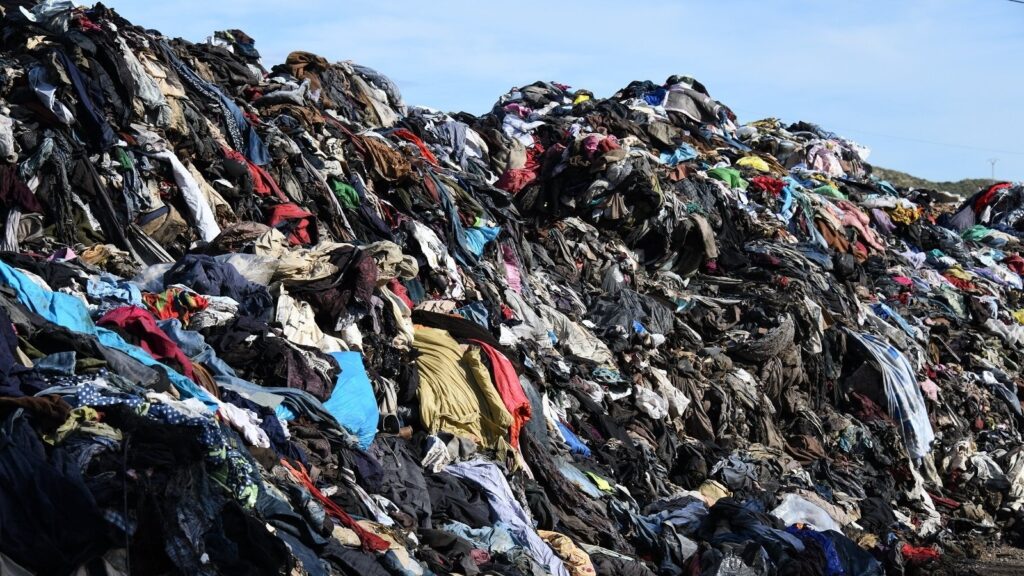Today, as the leaves start changing and that cool autumn air rolls in, it always feels like a chance to refresh things. We’re talking cozy sweaters, sturdy boots, and those layered outfits that just work. But with all the new trends hitting stores and social media, it’s tempting to grab more stuff. Here at The Net Zero Guy, we enjoy style as much as the next person, but we’ve dug into how fast fashion hides some serious downsides. This week, we’re focusing on clothing and consumption. Let’s break down the real impact of fast fashion this season and share practical tips like rewearing your favorites, smart layering, and scoring second-hand treasures. By the end, you might find yourself reaching for what’s already in your closet instead.

What Is Fast Fashion, Anyway?
Fast fashion is those affordable, on-trend clothes pumped out quickly by brands like Shein, Zara, or H&M to match every fleeting style. Picture racks of faux-leather jackets or oversized knits at rock-bottom prices, like $20. But that bargain comes with a steep environmental bill. The industry now hits around $150 billion globally, up over 10% from last year. It accounts for massive carbon emissions. Think 1.2 billion tonnes of greenhouse gases each year, more than international flights and shipping put together. In autumn, when we all want seasonal updates, production spikes. Most items are made from synthetics like polyester, derived from fossil fuels, and they linger in landfills for centuries. We’re talking over 92 million tonnes of textile waste annually worldwide. That’s enough to bury stadiums. Plus, the dyeing and manufacturing processes devour water and dump chemicals into rivers, messing with local ecosystems and people.

And it’s not just the planet. The human side is tough too. Workers in places like Bangladesh or Vietnam often face unsafe conditions for minimal pay. The Rana Plaza disaster back in 2013 killed over 1,100 people making clothes for familiar brands. While some progress has happened, issues like long hours and unfair wages persist. As we bundle up in new scarves or boots this fall, it’s good to consider the hands that made them. At The Net Zero Guy, our goal is zero waste and zero harm, so we can’t overlook how our choices keep this going. This isn’t about making you feel bad, it’s about getting informed so we can all choose better. Check out our net zero living guide for more on this.
The Human and Economic Toll
Beyond the environment, fast fashion exploits people. Many factories run on sweatshop labor, with workers clocking 120 hours a week in some cases. Brands push for speed, but at what cost? Documentaries like The True Cost, now a decade old, highlight this. On the flip side, economically, those cheap tees add up if you’re always buying. But shifting to sustainable habits can save you money long-term. For instance, a quality item from Patagonia might cost more upfront but lasts years, unlike a $10 fast fashion piece that falls apart.
Rewearing: Make the Most of What You Have
Let’s move to the good stuff and that is how to style smarter without buying new. Rewearing is key. Your closet likely has gems you’ve overlooked. This autumn, try a wardrobe audit: pull everything out, try combos, and note what works.. That wool sweater from last year? Mix it with different bottoms or accessories for a fresh vibe. Studies show rewearing can cut your clothing carbon footprint by 30%. It’s satisfying and builds your unique style, free from ad-driven trends.

Layering for Versatile Autumn Style
Autumn weather flips from warm days to chilly nights, so layering is your friend. Skip new outfits for every shift—build with what you own. Start with a base like a cotton tee from Everlane, add a cardigan, then a jacket. Transform a summer dress with tights, boots, and a denim layer. We love mixing textures: knit over leather or wool with cotton. It extends garment life and means less washing. Focus on thin inner layers to avoid bulk. Our team swears by merino wool bases for durability. Check Patagonia’s options for inspiration.

Second-Hand Finds: Treasure Hunting for Fall
Need something fresh? Go second-hand. Apps like Depop, ThredUp, or Poshmark are goldmines for autumn pieces for vintage trenches or leather boots at steals. It’s wallet-friendly and keeps clothes from landfills. If we all swapped one new item for used, it’d save emissions equal to 500,000 cars off the road. Fall is great for thrifting as people declutter summer gear. Filter by size on eBay or hit local shops. One of us snagged a plaid blazer from a flea market which is now a staple. Patience pays off; you might find better than planned.

Putting It into Practice This Autumn
Imagine a fall outing like a pumpkin patch. Instead of a $15 flannel from fast fashion, check your closet or thrift. Layer over jeans and boots you have. This saves cash and fits net zero goals. Our community shares that once they thrift and rewear, they feel more creative. For holidays, reuse costumes or DIY with basics teach sustainability along the way.
Economically, cutting purchases in half forces industry change. Quality coats last five years versus seasonal disposables. Second-hand markets boom, making it easy.
Wrapping Up: Small Steps for Big Change
Changing doesn’t mean all at once. This week, rewear an outfit three ways or thrift one item. Share with us and we’re here to help. At The Net Zero Guy, we want fashion to feel good. By rewearing, layering, and thrifting, you’re styling sustainably. Let’s make autumn eco-friendly.










